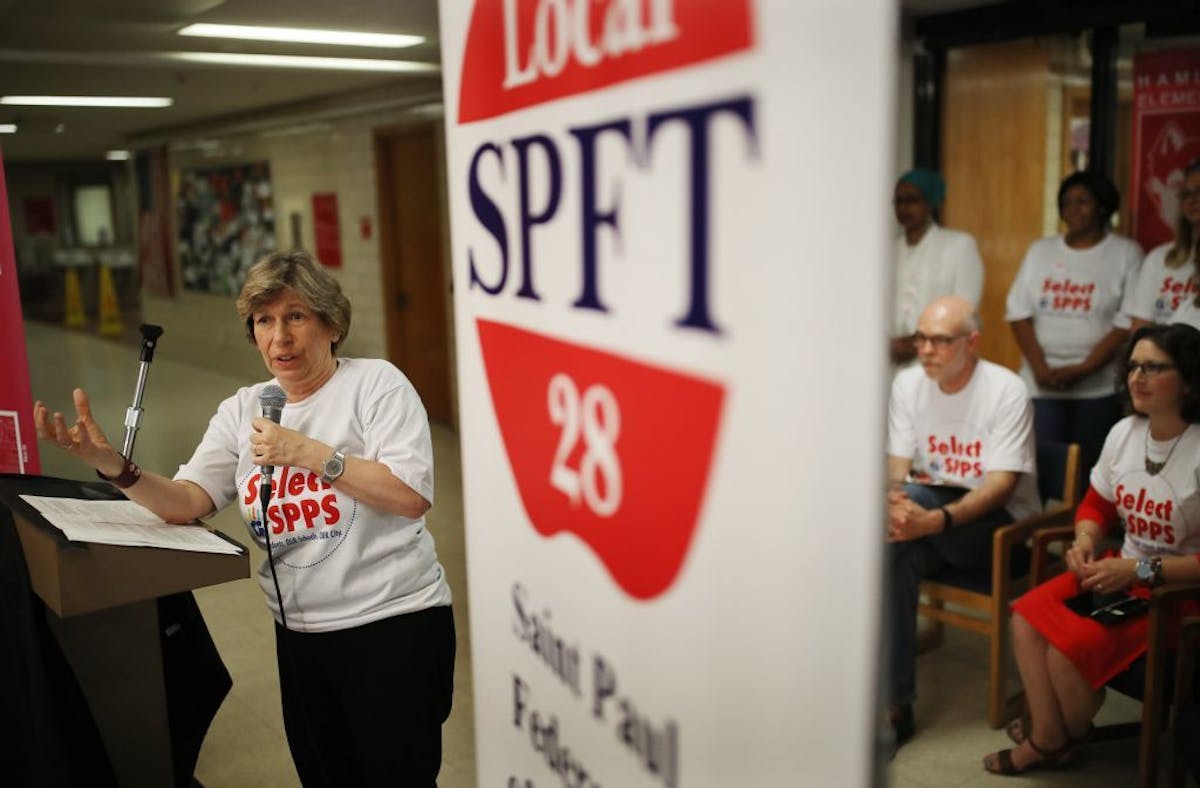More than 480 Minnesota schools struggling with low graduation rates, stagnant test scores or chronic absenteeism are set to get additional help from the state Department of Education, which is debuting a new approach to measuring schools' performance.
In the past, the state primarily used annual test scores to spot failing schools. Now, to comply with a new federal education law — the Every Student Succeeds Act, or ESSA — Minnesota is broadening its barometer for success to include high school graduation rates, attendance, progress made by students learning English, and students' improvement on test scores, year over year. Under those measures, 485 schools — about a quarter of all schools in the state — were singled out for low marks on at least one of those measures and must now begin a three-year effort to fix those problems.
Of the schools identified for extra help, 47 were designated for "comprehensive" support, the most substantial level the state offers, because they rank among the bottom of all Minnesota schools across multiple measures. Schools falling into that category are scattered across the state, although a significant number of them — 24 — are Minneapolis and St. Paul Public Schools or charter schools in those cities. Another 147 high schools will get comprehensive support because at least one student group had a graduation rate below 67 percent.
State Education Commissioner Brenda Cassellius said the new "North Star" accountability system is designed to provide a fuller picture of schools' performance than test scores alone, and to recognize progress instead of focusing solely on failures.
"We've tried to move from a shame-based punishment system to one that's supportive," she said. "With the new ESSA (law) and North Star system, we're able to seriously focus on continuous improvement."
The system also recognizes schools that excel in the same categories; this year, 526 schools have been highlighted as top performers for either specific groups of students or for the student body as a whole.
Among those lauded for their performance in specific categories are a few schools also identified as low performers in other measures.
Schools can be recognized for their performance or targeted for help based on how specific groups of students perform on each of the measures, such as graduation rates for English-language learners, math scores for American Indian students or attendance for students in special education. Schools struggling in a few categories will receive less intensive levels of help from the state, categorized as "targeted support" or simply "support."
The 47 schools set to receive "comprehensive" support have low performance among multiple student groups or their entire student body.
On the other hand, some of the high schools that ended up on the "comprehensive" support list are there because of low graduation rates among a single student group.
For example, Patrick Henry, South and Southwest high schools in Minneapolis, Anoka High School, Apple Valley High School and Wayzata High School are all identified for comprehensive support only because of graduation rates among their special education students. Minneapolis' Edison High School is on the same list, but has a much broader challenge, with graduation rates for five separate groups of students — and its overall rate — falling below 67 percent.
In a school board meeting Tuesday evening, members of the Minneapolis school board expressed frustration about the new system, saying large districts such as Minneapolis and St. Paul end up being unfairly singled out through a process that few parents and community members can fully understand. Though schools in Minneapolis and St. Paul account for just 13 percent of all schools in the state, they make up 32 percent of the list of schools identified for state support.
"All accountability systems are flawed," said board Chairman Nelson Inz. "The real question is how can the state help us do a better job serving our needier students?"
But state education officials say they spent months listening to that kind of feedback and incorporated it into the design of the new system.
Unlike accountability measures under older measurements such as Adequate Yearly Progress (AYP) or the federal No Child Left Behind law, the aim of North Star is to shift the focus away from students' performance and instead emphasize the work that adults — teachers, administrators and others — need to do to ensure that all students are making progress and receiving a well-rounded education.
Schools identified for help will get on-site assistance from education specialists who work in the state's Regional Centers of Excellence. In some cases, specialists will make weekly visits, offering suggestions and making sure schools are making progress along a timeline outlined by the state.
Schools will have to meet specific benchmarks to get out of the program, and will be assessed on their progress after three years. If they fail to improve, or decline, the state could take additional action — though officials say they haven't yet worked out the details for that kind of scenario.
Cassellius said the state could impose "degrees of further kinds of interventions," but added that the system "is not a punitive or shaming approach, it's a collaborative approach."
Staff writer Faiza Mahamud contributed to this report.

Racist slur on pedestrian bridge in Rochester prompts investigation
Police recover 124 cats from Crystal home; woman charged with felony animal mistreatment
Spring's hot gift book features gorgeous found-nature photos
Victim in north Minneapolis shooting identified as man from Chicago

